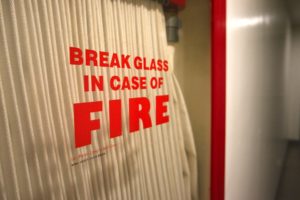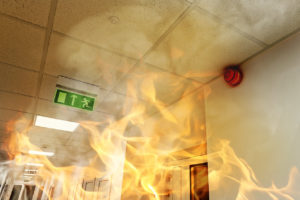Fire Safety for Small Businesses
July 14, 2017
The financial burden of a fire can be enough to shut a small business’s doors for good. But common fire safety practices and employee training can help substantially reduce the possibility of an incident.
How Do Office Fires Start?
The National Fire Prevention Association (NFPA) reports that U.S. fire departments responded to an average of 3,340 fires in office properties per year during the five-year period of 2007-2011.
What was the most common culprit? The report showed that cooking equipment caused more than one in every four office property fires (29%). This corresponding graph shows other common causes of fires in offices.
Tips for Prevention
Practicing smart fire safety is everyone’s job. All employees should be aware of common fire hazards and report any potential problem areas to be corrected. The NFPA and OSHA recommend the following fire safety strategies to help keep your small business protected:
- Maintain a tidy and organized workplace. Avoid instances of clutter in your space, as it may add fuel to any fire or block access to exits and emergency devices.
- Store oily rags in a fire-retardant or metal container, and make sure to dispose of them regularly and properly.
- Prevent overheating and friction sparks through regular machinery maintenance.
- Report any electrical hazards like faulty wiring and malfunctioning electrical equipment right away.
- Keep access to all electrical control panels free and clear. Material or equipment stored in front of them may hinder your ability to shut down power quickly in an emergency situation.
- Before using and storing chemicals, read the labels and the Material Safety Data Sheet (MSDS) to determine flammability and other fire hazards. Be sure to provide adequate ventilation when using and storing them.
- Use extreme precautions in potentially explosive atmospheres, like ones containing flammable liquid vapors or fine particles. Use non-sparking tools, and control static electricity as necessary.
- Arson seems unlikely, but it happens more often than you might think. Secure the building at all times; report suspicious people, and don’t leave combustible trash outside the building.
- Smoke only in designated areas, and extinguish smoking materials safely.
- Ensure your emergency measures can perform efficiently. Never block sprinklers, firefighting equipment, or emergency exits.
- Teach all employees how to operate a fire extinguisher properly. It seems obvious, but many people never touch a fire extinguisher until the very moment they need one.
- Post emergency telephone numbers and the company address by every telephone for quick access if a fire were to start in any work area.
- Create a written fire escape plan and post it in places accessible to all employees.
These tips are not a substitute for learning and following local safety codes. Your business must obtain proper safety certifications to do business legally. For more information about fire prevention and safety codes for small businesses, check out NFPA 101, Life Safety Code® or NFPA 5000, Building Construction and Safety Code®.
Employee Fire Training
Even with safety measures in place, fires can and do occur, and response must be safe and speedy. You can help reduce the danger to your team by establishing an employee fire training program.
The NFPA recommends that employees should be trained to do the following:
- Count the number of doors, machines or desks between their work areas and the nearest exit.
- Learn the location of alternative exits from all work areas.
- Know the location of the nearest fire alarm and learn how to use it.
- Be sure that someone in authority knows about any disability that could delay an escape, and makes plans for a safe evacuation.
Employers must also do the following:
- Post building evacuation plans and discuss them during new-employee orientations.
- Conduct regular fire drills.
- Include disabled employees in the fire emergency planning process.
- Train designated employees in the use of portable fire extinguishers, and designate employees who will help evacuate fire scenes.
For more information on fire safety planning, download OSHA’s free guide.
Consult an Expert
A professional fire security company can help you plan, install, and test your fire alarm system to ensure they meet all safety code requirements. Many people know Per Mar Security Services as experts in security alarm systems. But did you know that we offer monitored fire alarm systems to safeguard your business?
For more information on fire safety for your business contact us and you can request a free quote for a security consultant to follow up with you.
 Careers
Careers Customer Support
Customer Support (800) 473-7627
(800) 473-7627 Contact Us
Contact Us Locations
Locations

